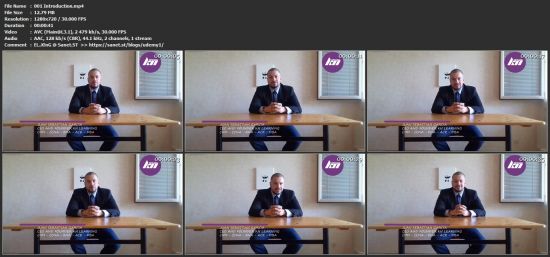Microsoft Azure Fundamentals 2022
This post was published 2 years ago. Download links are most likely obsolete. If that's the case, try asking the uploader to re-upload.

MP4 | Video: h264, 1280x720 | Audio: AAC, 44.1 KHz
Language: English | Size: 443 MB | Duration: 59m
Learn how to understand Microsoft Azure Cloud Infrastructure
What you'll learn
Learn how to understand Microsoft Azure Services and Concepts
Understand the Microsoft Azure components to be effective.
Learn the basic configuration and planning of Microsoft Azure Cloud
Learn basics of Active Directory in Microsoft Azure
Requirements
Any Laptop and Internet
Description
Microsoft Azure, often referred to as Azure is a cloud computing service operated by Microsoft for application management via Microsoft-managed data centers. It provides software as a service (SaaS), platform as a service (PaaS) and infrastructure as a service (IaaS) and supports many different programming languages, tools, and frameworks, including both Microsoft-specific and third-party software and systems.
Azure, announced at Microsoft's Professional Developers Conference (PDC) in October 2008, went by the internal project codename "Project Red Dog", and formally released in February 2010, as Windows Azure before being renamed to Microsoft Azure on March 25, 2014.
Microsoft Azure uses a specialized operating system, called Microsoft Azure, to run its "fabric layer" a cluster hosted at Microsoft's data centers that manage computing and storage resources of the computers and provisions the resources (or a subset of them) to applications running on top of Microsoft Azure. Microsoft Azure has been described as a "cloud layer" on top of a number of Windows Server systems, which use Windows Server 2008 and a customized version of Hyper-V, known as the Microsoft Azure Hypervisor to provide virtualization of services.
Scaling and reliability are controlled by the Microsoft Azure Fabric Controller, which ensures the services and environment do not fail if one or more of the servers fails within the Microsoft data center, and which also provides the management of the user's Web application such as memory allocation and load balancing.
Azure provides an API built on REST, HTTP, and XML that allows a developer to interact with the services provided by Microsoft Azure. Microsoft also provides a client-side managed class library that encapsulates the functions of interacting with the services. It also integrates with Microsoft Visual Studio, Git, and Eclipse.
In addition to interacting with services via API, users can manage Azure services using the Web-based Azure Portal, which reached General Availability in December 2015. The portal allows users to browse active resources, modify settings, launch new resources, and view basic monitoring data from active virtual machines and services.
Azure uses large-scale virtualization at Microsoft data centers worldwide and it offers more than 600 services.
Who this course is for
Any IT User
Any Technology Student
Screenshots
Homepage
without You and Your Support We Can’t Continue
Thanks for Buying Premium From My Links for Support
Click >>here & Visit My Blog Daily for More Udemy Tutorial. If You Need Update or Links Dead Don't Wait Just Pm Me or Leave Comment at This Post
Download from free file storage
Resolve the captcha to access the links!
Registered members don't get captcha ... just sayin
